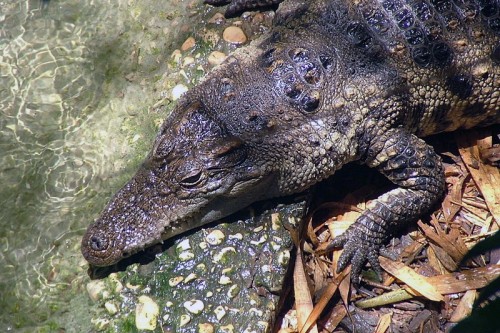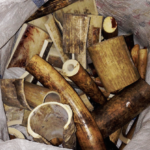
With almost no Siamese crocodiles left in the wild, this story comes as quite a shocker.
The Guardian reported over the weekend that Chinese police acting on a tip-off about “unusual cargo” seized 3,619 Siamese crocodiles and arrested three “foreign” smugglers in an area near the Vietnam border.
The suspects apparently admitted their plans to sell the reptiles to restaurants in the Guangdong province, where there is high demand for “exotic foods”.
Tragically, the article claims at least 42 of the crocs died in transit due to high temperatures, dehydration, and overcrowding.
The survivors are reportedly being treated by a vet, but there was no mention of what will happen with these animals.
It seems Chinese environmental protection group, Green Eye of China, told The Guardian that, although sellers and traders claim crocodile flesh contains “special nutritional benefits”, most people dine on them simply because they enjoy trying “new and adventurous dishes”.
The Green Eye of China spokesperson went on to suggest that a lack of border inspections is enabling the trade to run rampant throughout China — even claiming some individuals walk across the border carrying crocodiles in boxes on their backs.
Siamese crocodiles are almost extinct
The International Union for the Conservation of Nature (IUCN) lists the species as “Critically Endangered” and says there are very few left in the wild.
Small populations remain in Laos, Viet Nam, and Indonesia, but wild Siamese crocodiles are virtually gone in Thailand. In 2000 a single specimen was discovered in Kaeng Krachan National Park in western Thailand, and in 2002 one to three were sighted in Khao Ang Rue Nai Wildlife Sanctuary in central Thailand.
The IUCN adds that the Siamese crocodile has become locally extinct throughout much of its former range, which once encompassed Cambodia, Indonesia, Malaysia, Viet Nam, and Thailand.
The main threats to this species include illegal hunting, persecution from humans (i.e. removed as ‘vermin’), and habitat loss and degradation.
Although captive breeding programs have been established as part of plans to reintroduce the animals to their natural habitat, it seems questionable how any group (or individual) could’ve obtained over 3,600 of them, as was seen over the weekend in China.
It’s worth mentioning that some crocodile farms in Asia have been found breeding Siamese crocodiles in order to sell their flesh and skins — particularly in Vietnam, where prior to a few recent reintroductions, the species was thought to actually be extinct in the wild.
Image by “SuperJew” (own work) via Wikimedia Commons




